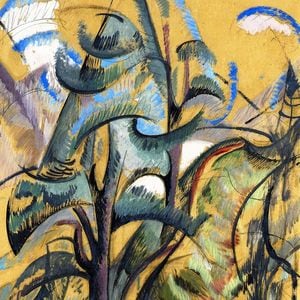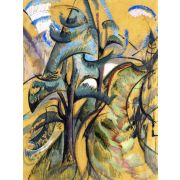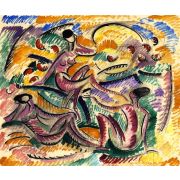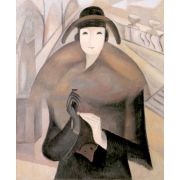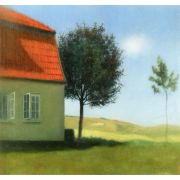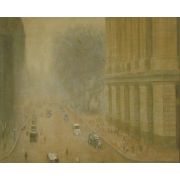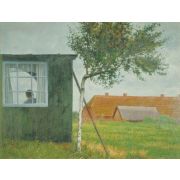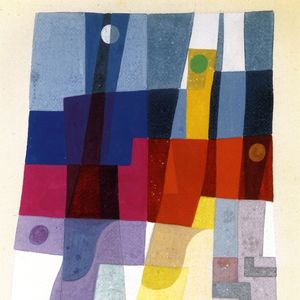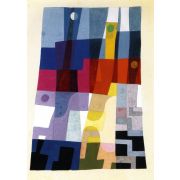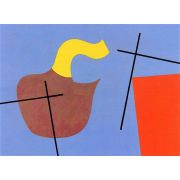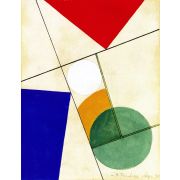
Dada
Dada
1 to 3 out of 3 artists
Alice Bailly
1872 -1938, Swiss, Female Artist / Post-Impressionism , Dada , and Cubism, 124 works
Arthur Segal
1875 -1944, Romanian / Expressionism and Dada, 64 works
Sophie Taeuber-Arp
1889 -1943, Swiss, Female Artist / Dada, 7 works
1 to 3 out of 3 artists
Dada was an art movement of the European avant-garde in the early 20th century. Its first centers were in Zürich, Switzerland, at the Cabaret Voltaire (around 1916) and New York City. Dada began about 1915, and it grew in Paris after 1920. In response to World War I, artists who were part of the Dada movement rejected modern capitalist society's logic, reason, and aesthetics. Instead, they used their art to express nonsense, irrationality, and anti-bourgeois protest. The art of the movement included collage, sound poetry, cut-up writing, and sculpture, to name a few examples. Dadaist artists made it clear that they didn't like violence, war, or nationalism and stayed politically close to the far left.
No one agrees on how the movement got its name, but one familiar story is that the Austrian artist Richard Huelsenbeck randomly put a knife in a dictionary. It landed on the word "dada," a French word for a hobby horse. Others say that it sounds like a child's first words, giving it a childish and silly tone that the group liked. Still, some people think that the term may have been chosen because it has the same meaning (or no meaning) in every language, which would show how international the movement is.
The avant-garde was where Dada got its start before World War I. Marcel Duchamp came up with the term "anti-art" around 1913 to describe works that don't fit into traditional ideas of what art is. Cubism, the rise of collage, and the development of abstract art would help the movement break from reality and convention. Dada's rejection of the close connection between words and meaning was influenced by the work of French poets, Italian futurists, and German expressionists. Works like Alfred Jarry's Ubu Roi (1896) and Erik Satie's ballet Parade (1916–17) could also be called "proto-Dadaist." Hugo Ball wrote the Dada Manifesto in 1916, the first time the movement's ideas were written down.
There were public meetings, protests, and the publication of art and literary journals as part of the Dadaist movement. Art, politics, and culture were often talked about passionately in various media. Hugo Ball, Marcel Duchamp, Emmy Hennings, Hans Arp, Raoul Hausmann, Hannah Hoch, Johannes Baader, Tristan Tzara, Francis Picabia, Huelsenbeck, George Grosz, John Heartfield, Man Ray, Beatrice Wood, Kurt Schwitters, Hans Richter, and Max Ernst were all important people in the movement. Later styles like avant-garde and downtown music, as well as groups like surrealism, Nouveau Réalisme, pop art, and Fluxus, were influenced by the movement.
Dada was a loosely organized international movement with people from Europe and North America participating. Dada got started around the time that World War I began. Many people who participated in the direction saw it as a protest against bourgeois nationalist and colonialist interests, which many Dadaists thought were the cause of the war, and against the war's effect on cultural and intellectual conformity in art and society as a whole.
Avant-garde groups outside France knew about what was happening in Paris before World War II. They had seen or taken part in cubist shows at Galeries Dalmau in Barcelona in 1912, Galerie Der Sturm in Berlin in 1912, the Armory Show in New York in 1913, SVU Mánes in Prague in 1914, several Jack of Diamonds shows in Moscow and De Moderne Kunstkring in Amsterdam in 1914. (between 1911 and 1915). Futurism grew out of the work of many different artists. Dada later put all of these ideas together.
